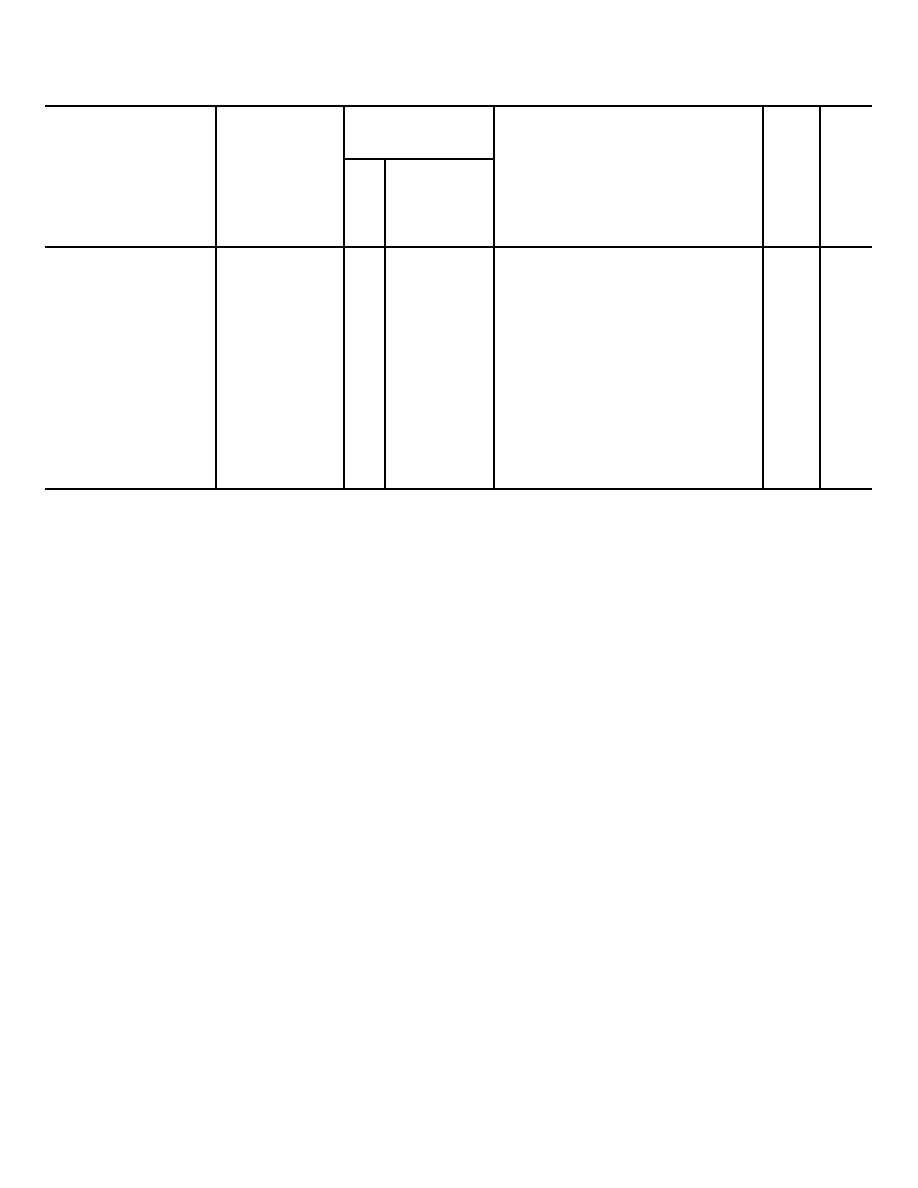 |
|||
|
|
|||
|
Page Title:
Section II. PREVENTIVE MAINTENANCE |
|
||
| ||||||||||
|
|
 Table 2-1. Special Tools, Test, and Support, Equipment
Reference
Item
FSN or
Use
Fig.
Item
No.
No.
Reference No.
Fig
Para No.
No.
2-7a
TESTER: thermostat
Temperature control thermostat and
2-1
1
indicator
TESTER: cooling
2-9d, 3-22
system
Test radiator caps
2-1
2
2-17d, 3-18a
TESTER: flo
4910-015-2395
Test for radiator blockage
2-1
3
3-8b
GUN: flushing
4910-449-6790
Cleaning radiator and engine block
2-1
4
3-21e
TESTER: combustion
Test for combustion leakage
2-1
5
3-9b
VAT: cleaning
Cleaning radiator
2-1
6
3-8a, 3-14
BOOTH: spray
4940-078-4126
Painting and flushing radiator,
2-1
7
3-42e
STAND: radiator test
4910-078-9190
Radiator testing and repair
2-1
8
3-39a
PRESS: arbor
3444-449-7295
Straightening radiator cores
2-1
9
2-22, 2-15a
TOOL cleaning
2815-494-8257
Removing debris from radiator cooler
2-1
10
fins.
3-19d
SET: plug
4910-273-3660
Radiator testing
2-1
11
Section II. PREVENTIVE MAINTENANCE
2-3.
General
2-4.
Engine Cooling Problems in Military
a. Cooling system preventive maintenance avoids
Operation
engine-cooling failures, operating difficulties, and loss of
Special requirements of military engines and severe
equipment use. Neglect of cooling system preventive
conditions of transport and combat operation make It
maintenance services often results in avoidable work,
necessary that the engine cooling system be maintained
expense, and time required for corrective repairs and
as closely as possible to maximum efficiency at all times.
replacements. Tools or replacement parts are not always
Many military-vehicles are powered with comparatively
readily available for emergency corrective services, and
large engines which develop proportionately large
engine-cooling failures may occur In situations when it is
amounts of heat that must be carried off. Also, cooling is
Inconvenient or even impossible to perform corrective
often made more difficult by the presence of air flow
repair work. However, the most serious penalty for
obstructions necessary for protection. Weather conditions
neglecting cooling system preventive maintenance
from the heat of the desert to the bitter cold of the Arctic.
services are operating difficulties, loss of mobility, failure of
Power requirements, which range from emergency high
mission and the serious effect such failure may have on
speeds on surfaced roads to heavy uphill hauling through
critical military operations,
deep mud, add further to the problem of engine cooling.
At the same time, military operating conditions, severe
b. Practically all cooling system troubles can be
shocks, vibration, flying debris, sand and dust. exposure,
detected by the driver in their early stages before they
and accidental and combat damage, cause rapid
seriously affect vehicle operation and they are still easy to
deterioration of the cooling system and loss of cooling
correct. For the stationary engine operator or driver the
efficiency. To keep the cooling system constantly in repair
two most important indications are coolant operating
and in best working order requires the most careful
temperature and coolant level. Therefore, preventive
attention to periodic preventive maintenance services by
maintenance services to the cooling system should be
the organizational mechanic.
concentrated on these two first requirements. While all
other preventive maintenance services, such as checks for
2-5.
Leakage
leakage or defective mechanical condition of parts, are
a. Causes Leakage is probably more common in
also necessary, these conditions are nearly always
the vehicle cooling system than In any other liquid-carrying
indicated by the engine temperature gage, by level of the
unit, due to the stresses and strains set up in joints and
coolant in the radiator, or by both.
connections by wide changes In coolant and metal
temperatures, especially during cold-weather operation.
Engine vibration, road
2-4
|
|
Privacy Statement - Press Release - Copyright Information. - Contact Us |